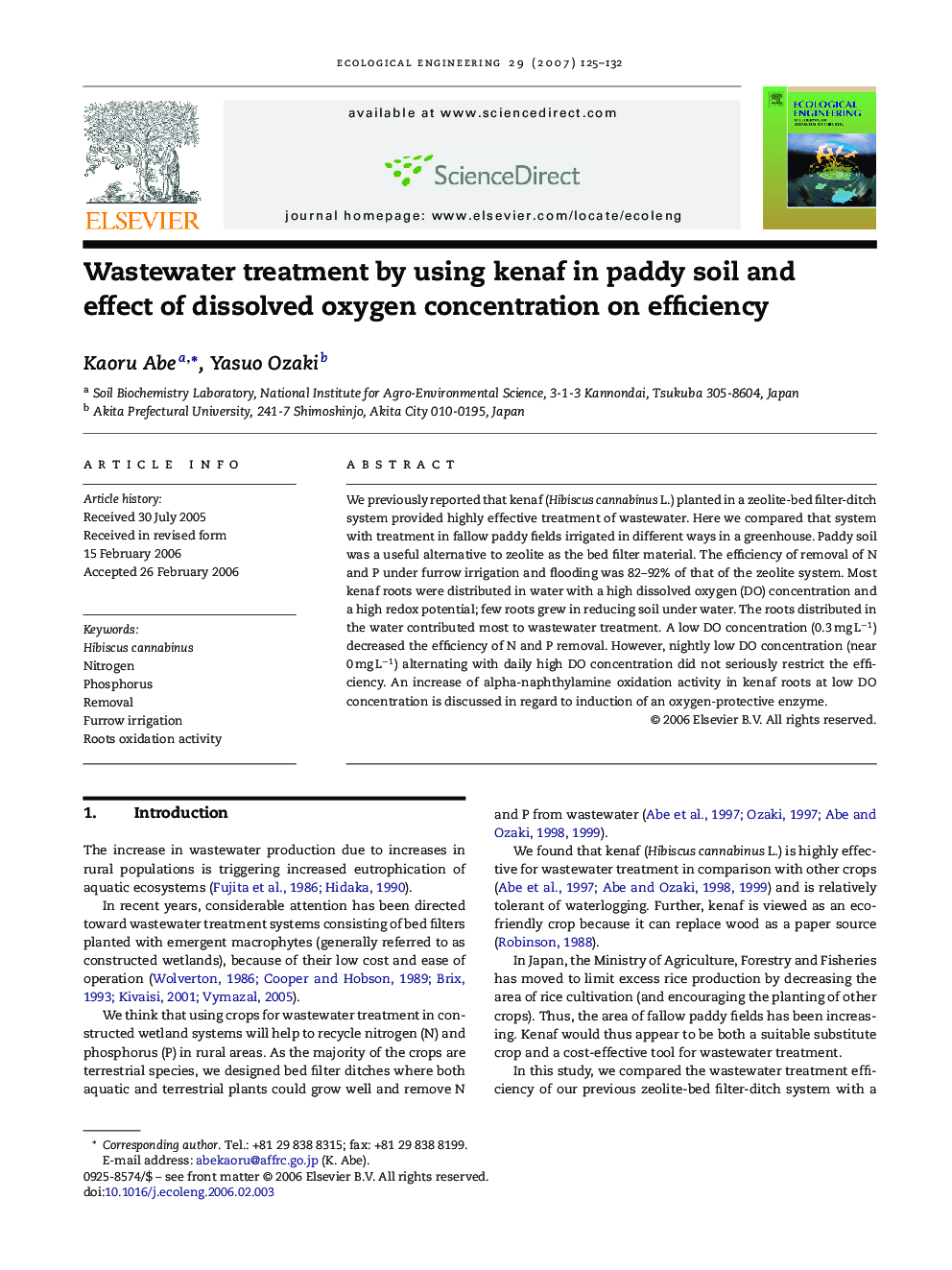| Article ID | Journal | Published Year | Pages | File Type |
|---|---|---|---|---|
| 4391280 | Ecological Engineering | 2007 | 8 Pages |
We previously reported that kenaf (Hibiscus cannabinus L.) planted in a zeolite-bed filter-ditch system provided highly effective treatment of wastewater. Here we compared that system with treatment in fallow paddy fields irrigated in different ways in a greenhouse. Paddy soil was a useful alternative to zeolite as the bed filter material. The efficiency of removal of N and P under furrow irrigation and flooding was 82–92% of that of the zeolite system. Most kenaf roots were distributed in water with a high dissolved oxygen (DO) concentration and a high redox potential; few roots grew in reducing soil under water. The roots distributed in the water contributed most to wastewater treatment. A low DO concentration (0.3 mg L−1) decreased the efficiency of N and P removal. However, nightly low DO concentration (near 0 mg L−1) alternating with daily high DO concentration did not seriously restrict the efficiency. An increase of alpha-naphthylamine oxidation activity in kenaf roots at low DO concentration is discussed in regard to induction of an oxygen-protective enzyme.
